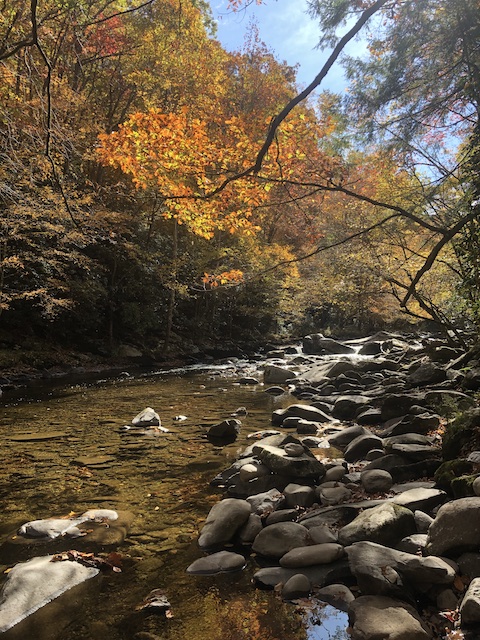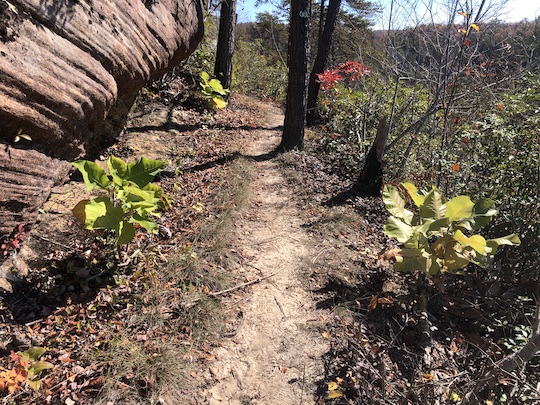As a followup to my last short photography piece on light and dark in your fish pictures, here is another quick photography tip to help you think more broadly about framing your pictures. This will apply whether you are shooting quick cellphone pictures or taking more time with some quality camera gear. No matter what you are shooting with, you should always consider your subject, framing, and the light. In these particular examples, I was just snapping quick pictures with my cellphone while out fishing for hiking.
In this first example, I want to point out something that is so obvious as to be often overlooked. First, let's look at the picture.
As you can see, the peak fall colors made my job as the photographer easy. This is an unedited picture straight from my cellphone. What really makes this picture work is the golden reflections on the surface of the water. You can see more pictures from this day from my friend and client Simone Lipscomb via her blog post about it. It was an incredible day with the mountains showing off in their fall finest.
Still, a couple of small details bring this picture together. In addition to the aforementioned golden reflections on the water, also note I more or less considered the simple and ever popular rule of thirds with Little River disappearing around the next bend about where the intersection of one of those lines of thirds is. The golden light was also crucial. Positioning myself in such a way to see those reflections made this shot much more than it would have been otherwise. If I was on the wrong side of the creek, those reflections would have been nonexistent.
So, what about when the fall colors are past their peak? How do you draw a picture together when the subject isn't showing off as well? Here is another example to examine.
In this picture, the one bright burst of gold really sets an otherwise somber scene off. Furthermore, instead of finding the reflections, I framed the picture from an angle that shows the clarity of the low water of autumn in the Great Smoky Mountains. Rocks alongside Little River add texture and pleasing shapes to an already interesting scene while the main subject, the golden leaves, are positioned approximately following the rule of thirds.
In this last picture, an otherwise drab scene draws your eye in because of the bursts of bright green. These magnolia trees were somehow still green while almost everything else was well past the peak colors. With so much brown and rust around us, these green explosions made me stop and snap a quick picture on my phone. The large rock bluff/outcropping on the left bring another interesting element into the picture as the trail curls off in the distance around the bend. I don't know about you, but looking at this scene makes me want to see what is around the next corner, kind of the same as when I'm looking up a trout stream.
I hope these tips help you take better pictures. All of these were taken with a cellphone, so remember you don't need a fancy camera to take great pictures these days. The fancy camera opens up some further possibilities, especially in post processing, but a cellphone does much better than the first point and shoot camera I took with me on fishing trips back around 2005 or 2006 or so when this blog was just getting started...





No comments:
Post a Comment